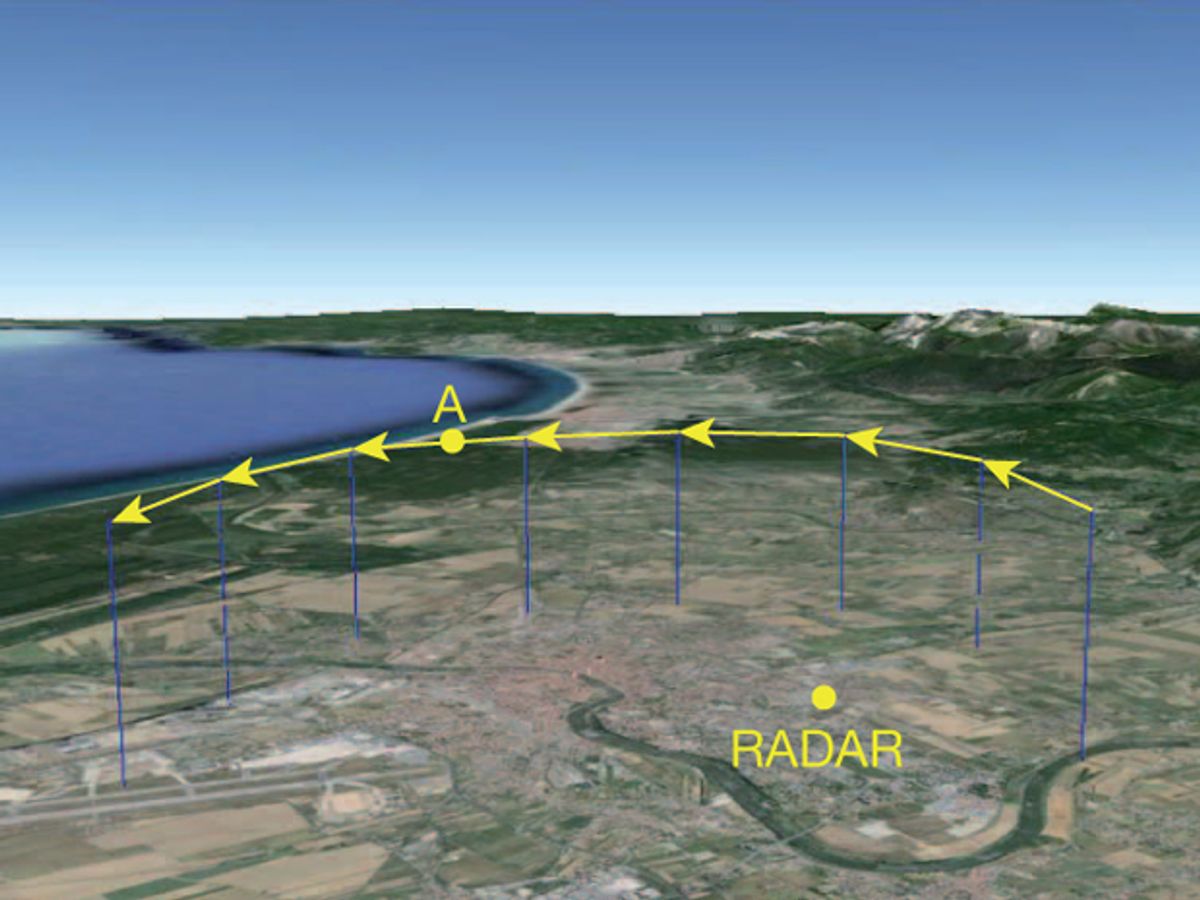Using a laser to generate radio-frequency radar pulses, a group of researchers has demonstrated a radar system that they say can be smaller, more efficient, and more accurate than anything available today.
The work could make it easier for radar systems to use software-defined radio, which allows users to rapidly change the signal they generate using software rather than analog hardware components such as mixers, amplifiers, and the like. Dispensing with these electronic components would make radars smaller, lighter, and more energy efficient, making them attractive for use aboard airplanes and in remote locations. They could even be switched on the fly from acting as radars to working as communications devices, says Paolo Ghelfi, an optical communications researcher at the National Inter-University Consortium for Telecommunications in Pisa, Italy. Ghelfi, head of research Antonella Bogoni, and their colleagues describe their photonics-based, fully-digital radar system, PHODIR, in this week’s issue of Nature.
“Since it is fully digital you can decide to do any kind of signal,” Ghelfi says. “If you detect something that is of interest you can change the waveform just in that direction.”
Today’s state-of-the-art electronic radar transceivers can only generate digital signals—which are run through an analog-to-digital converter both on transmission and reception—at frequencies of 2 GHz and below. To get the higher frequencies needed for better resolution, those signals have to be upconverted by other electronics. Once the signal goes out, bounces off whatever is being tracked, and comes back, it then has to be downcoverted at the receiver. The whole process introduces noise, particularly timing jitter—variations in when the pulses are received—that limits how well the radar can measure the location and trajectory of its target.
To generate their radar signal, Ghelfi and company used software to select two optical resonant frequencies (modes) in a mode-locked laser and fired it at a photodiode sensor. The electrical output from the sensor is an RF signal that can reach up to 40 GHz without upconversion; because the laser is mode-locked, there is very little noise. Return signals are altered in amplitude in a way that is easy to accurately digitize.
The result is timing jitter that is 10 times lower than the electronic equivalent.
The team tested their system on a series of planes taking off from Pisa International airport and found that it measured trajectories accurately. For instance, it tracked one aircraft at a distance of 5.5 kilometers with a radial velocity of 95 kilometers per hour (an airspeed of roughly 400 km/h). The plane’s onboard system showed it at 5.4 km and 96 km/hr.
Ghelfi says a company in Italy is looking at the system to decide how best to commercialize it.
Neil Savage is a freelance science and technology writer based in Lowell, Mass., and a frequent contributor to IEEE Spectrum. His topics of interest include photonics, physics, computing, materials science, and semiconductors. His most recent article, “Tiny Satellites Could Distribute Quantum Keys,” describes an experiment in which cryptographic keys were distributed from satellites released from the International Space Station. He serves on the steering committee of New England Science Writers.



